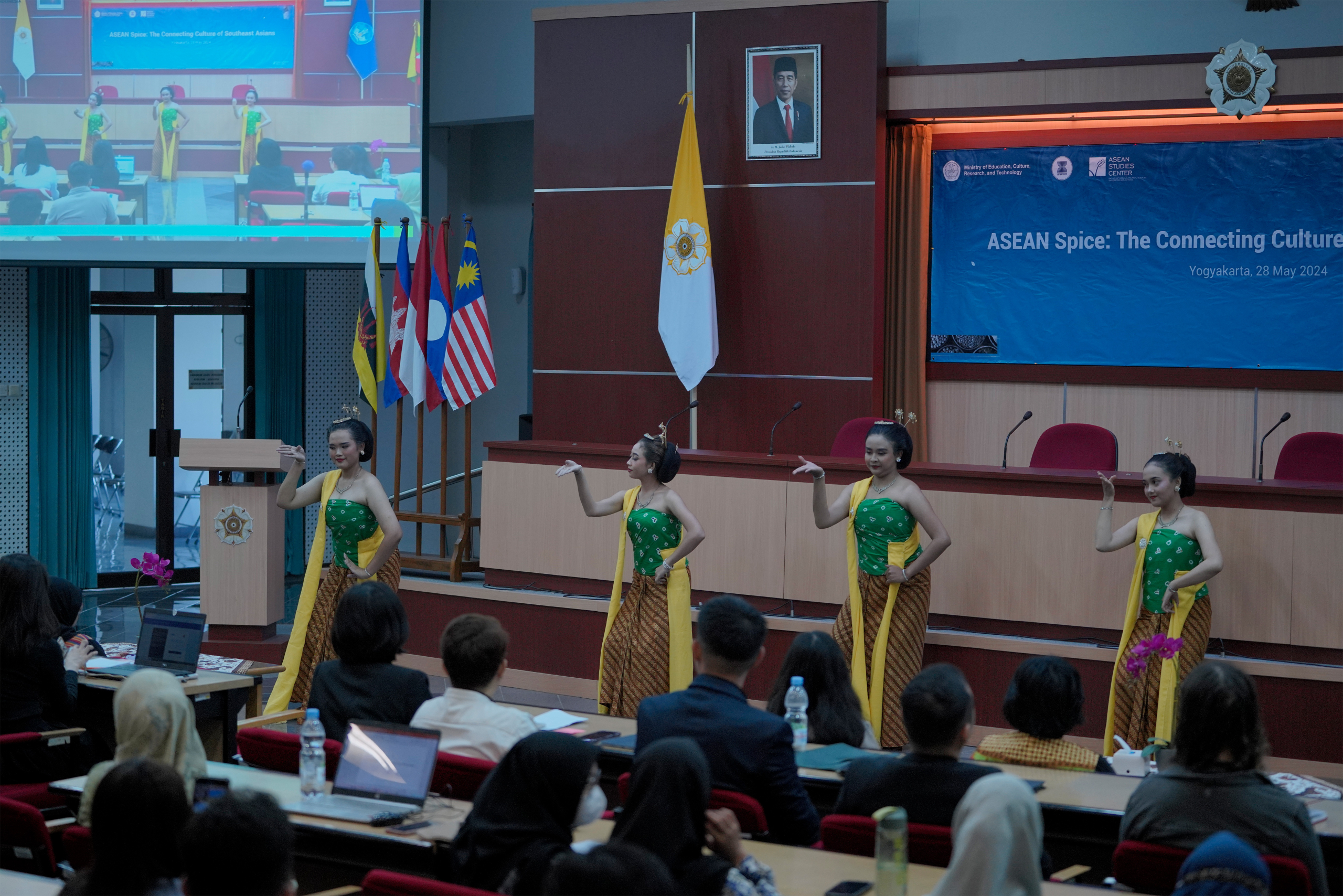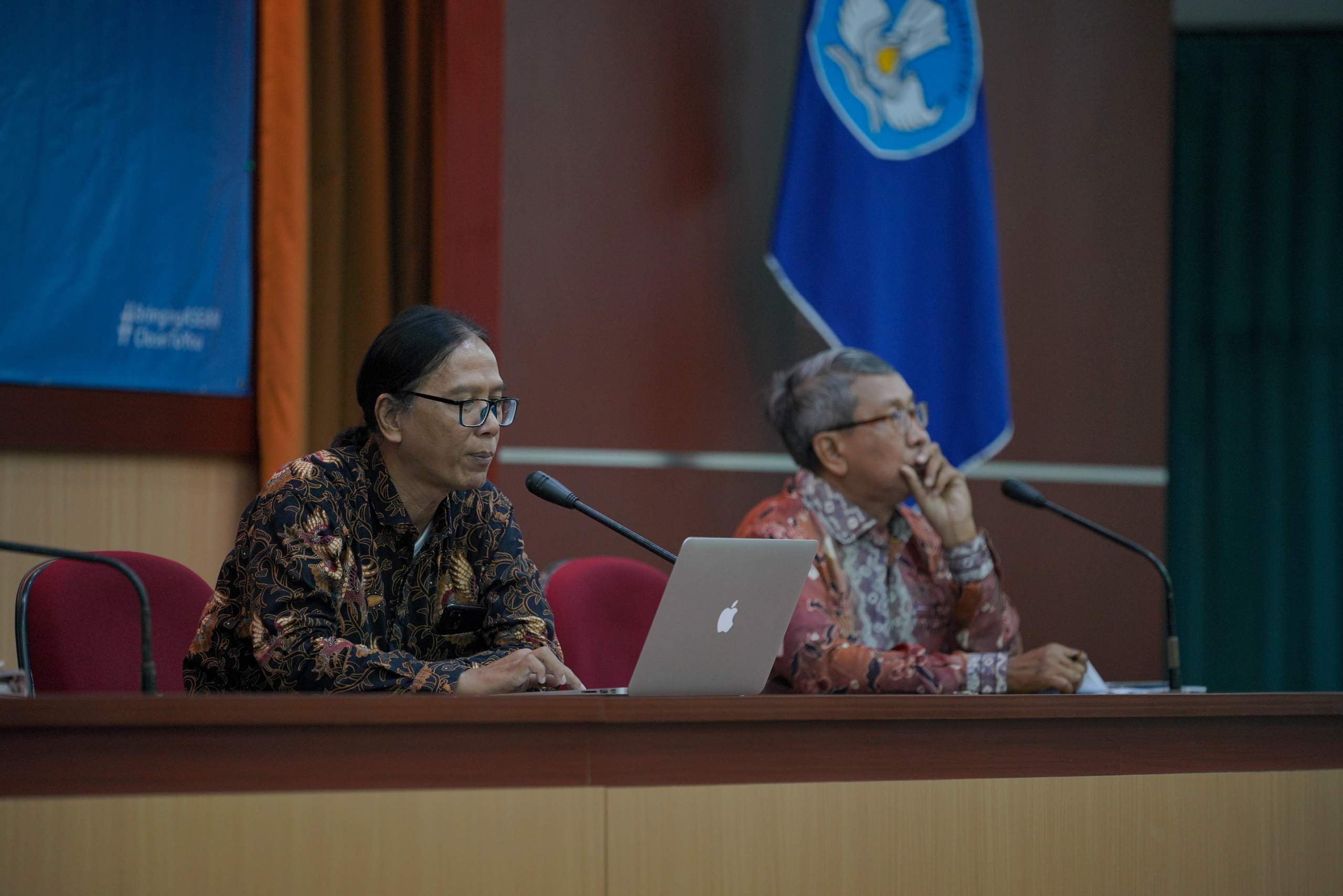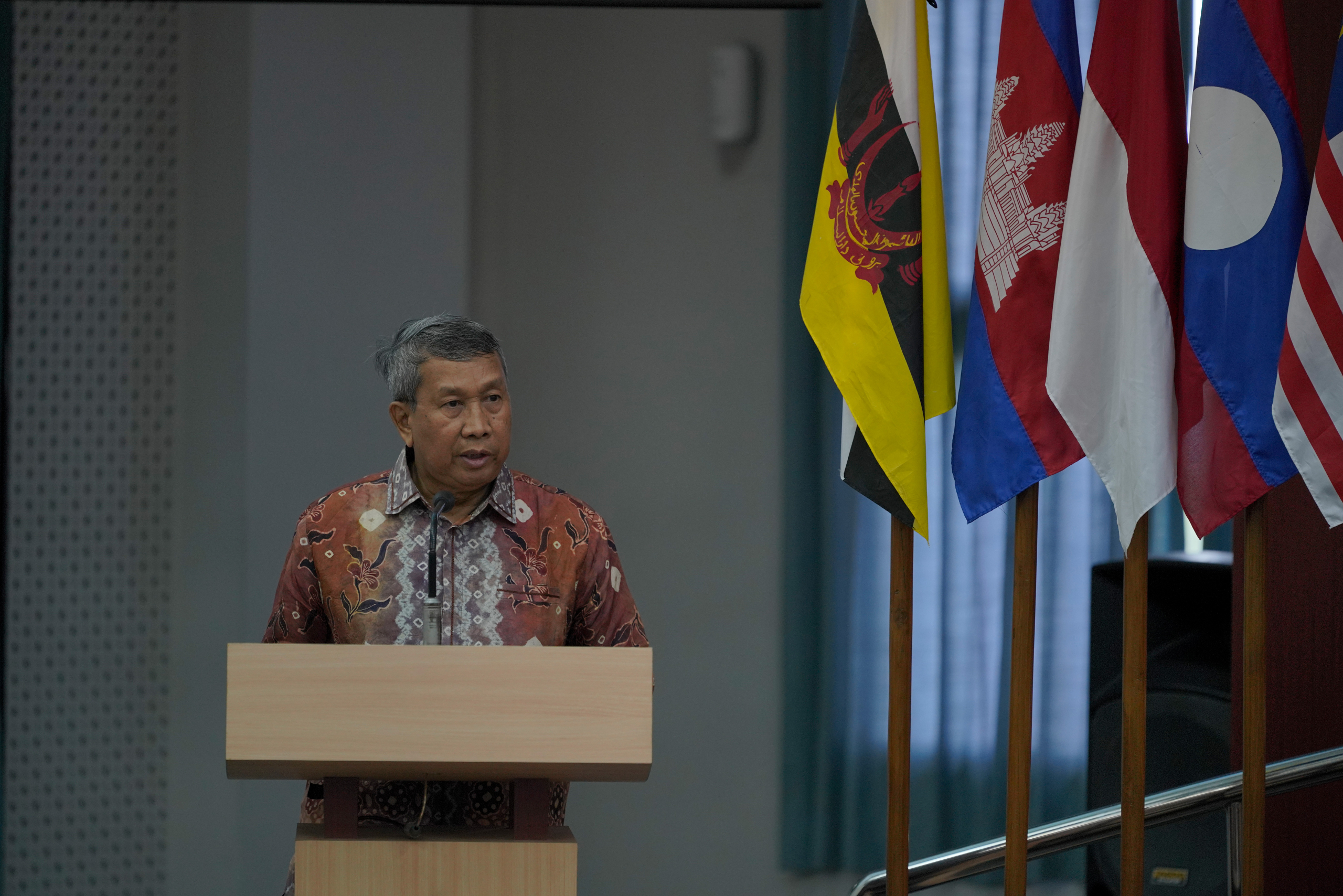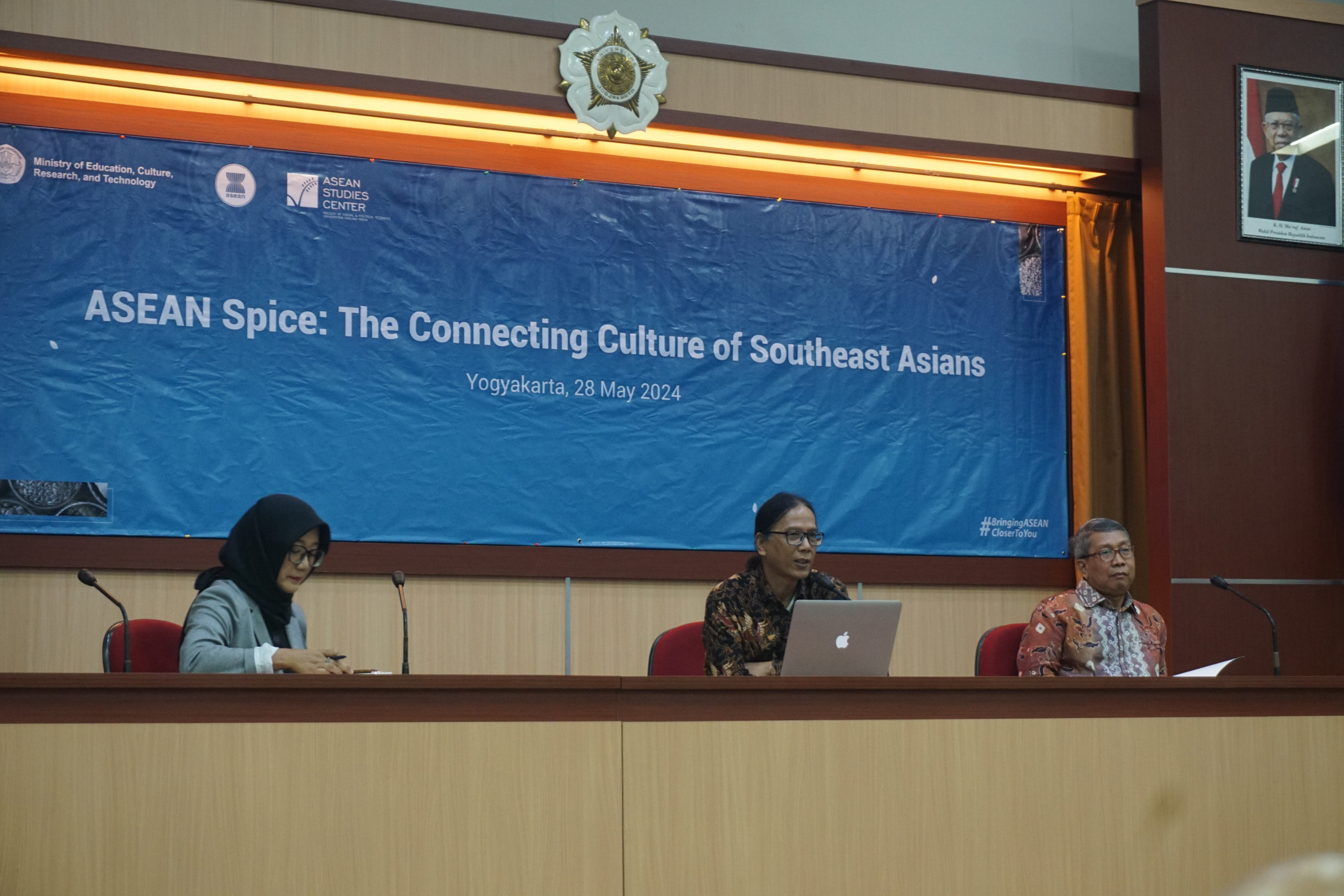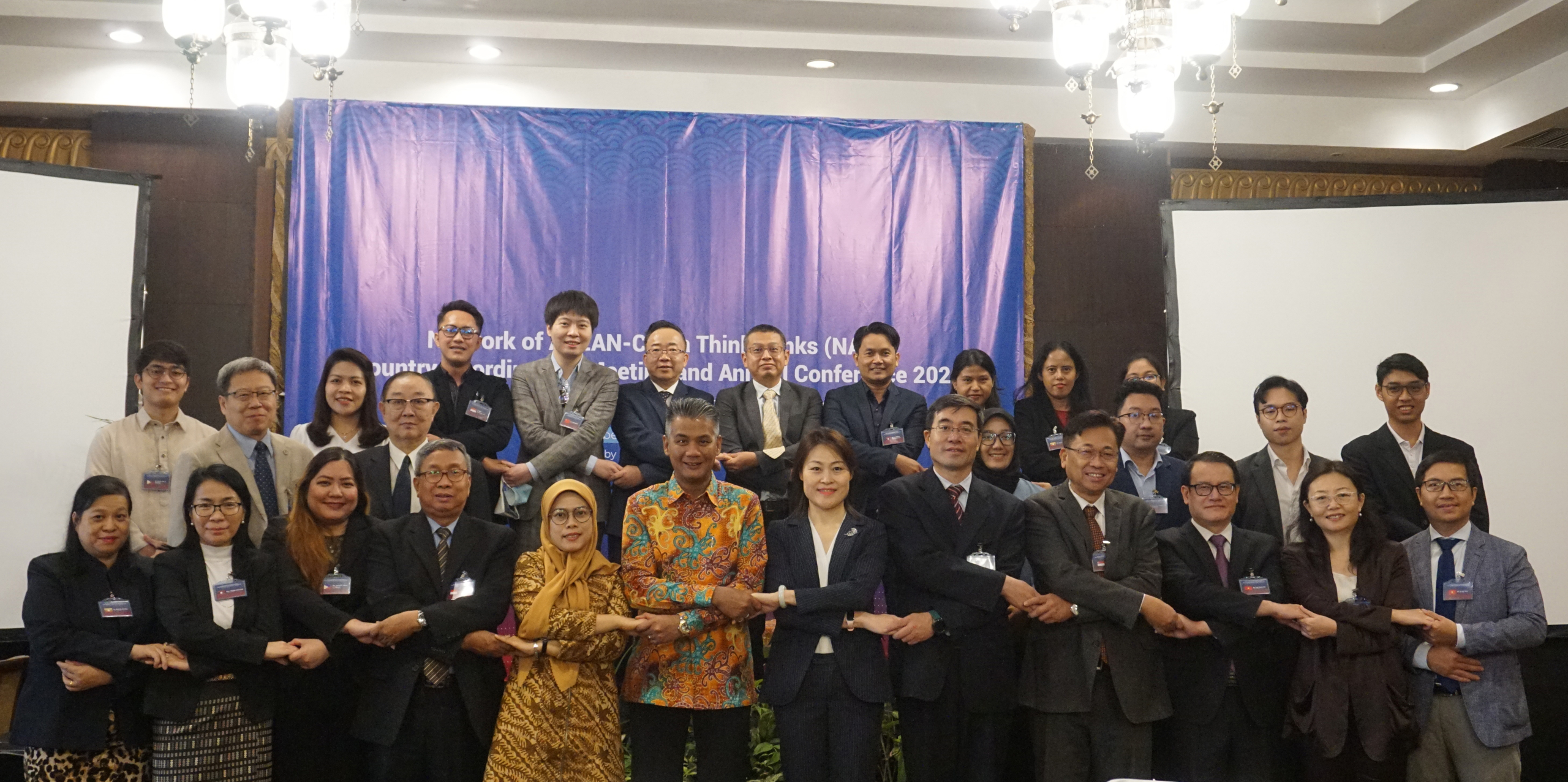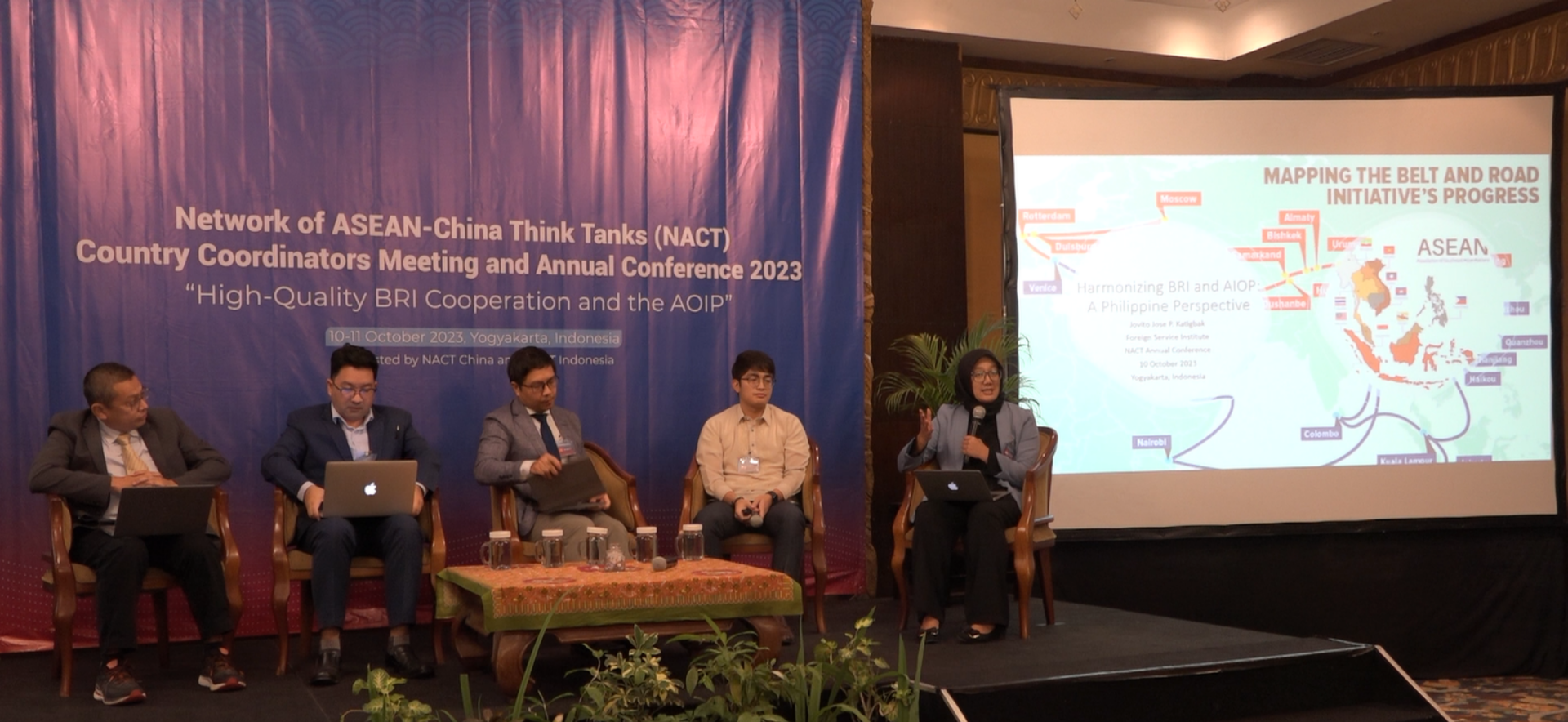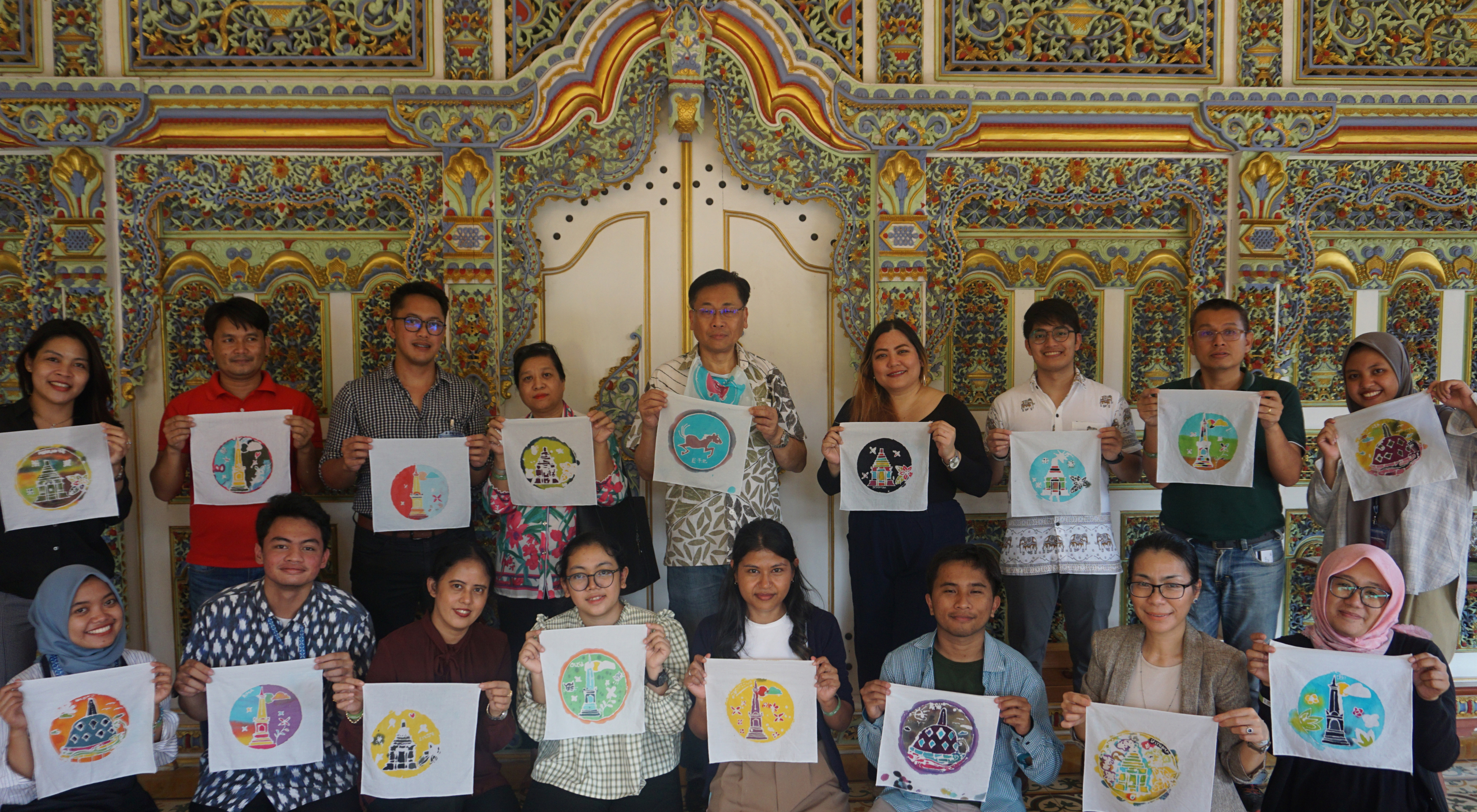ASEAN Spice: The Connecting Culture of Southeast Asians

Background
Gastro-diplomacy, or culinary diplomacy, is a fascinating approach to international relations that leverages food to foster cultural exchange and build relationships between nations. In the context of the Association of Southeast Asian Nations (ASEAN) countries, the region consists of an abundance of spices and flavors that have not only shaped its cuisine but also played a significant role in its history and global trade. Due to similar weather patterns and geographical conditions, the region shares similar yet unique vegetation and spices that connect the neighboring countries and enhance existing diplomatic ties.
In the same context, the Ministry of Education, Culture, Research, and Technology of the Republic of Indonesia, in coordination with the ASEAN Studies Center (ASC), UGM, organized a day-long seminar on the topic “ASEAN Spice: The Connecting Culture of Southeast Asians” on the 28th of May 2024. The main objective of the seminar was to start a discourse on the spice trade and its cultural and culinary reclamation coupled with heritage preservation; this was held with the experts from each member country to share their own unique history.
Program Proceeding
The ASEAN Spice seminar began with singing the Indonesian national song and the ASEAN anthem. Then continued with the Gambyong Pareanom dance from the Surakarta Style Javanese Arts Unit (UKJGS). Ms. Marsha Phoebe, the MC for the seminar, then initiated the event by welcoming all the esteemed representatives from the Ministry of Education, Culture, Research and Technology, representative from ASEAN headquarters, Directorate of ASEAN socio-cultural cooperation in the Ministry of Foreign Affairs, representative of SPICE Cosmopolis UGM, and the delegates from the ASEAN member states, academicians and the participants. She highlighted the importance of the Southeast Asia’s shared living heritage and not limiting it to mere objects of trade that attracted the colonizers to exploit the region for centuries but regarding it as a testament of resilience over the years.
The representative from the ministry, Ms. Dharmawati, went on to share the importance of exchanging the culture and identity in ASEAN and further studying its potential. The wellness industry, as per the Global Wellness Institute in 2022, had an output of about 5.6 trillion USD in the global economy, out of which 200 billion USD was from the ASEAN nations.
Moving on, a keynote discussion was moderated by Ms. Yulida Nuraini Santoso, Managing Director of ASEAN SC and Lecturer at the Department of International Relations, UGM, where the keynote speakers were Dr. Sri Margana; Historian, Senior Lecturer, Department of History, UGM and Dr. Dafri Agussalim; ED of ASEAN SC, Professor at Department of International Relations, FISIPOL, UGM. The discussion went ahead with the historical aspect of spice in Indonesia and how it has been able to foster cultural and economic knowledge, customs, and traditions. Historically, the spice was traded by the Arabs from India, Ceylon, and Nusantara. They enjoyed the spice trade monopoly until the colonizers from Portugal, Britain, and the Netherlands arrived. Similarly, when we analyze the spice trade, Indonesia has always been at the center of it as most of the plants were native to Indonesia. Along with the trading, the traders brought about their cultural and religious practices, such as Islam, Christianity, Hinduism, and Confucianism, to Indonesia, which has now become embedded as a part of the Indonesian identity. The efforts made by the UGM Spice Cosmopolis were shared, where they hold the notion that the contribution of Nusantara spices is not merely for trading routes but also as a form of creativity and the formation of spice culture. Thus, it is high time to revitalize and reclaim the cultural identity linked with spices.
Dr. Dafri Agussalim stressed the importance of gastro-diplomacy and its role in international relations in fostering mutual understanding and cooperation, strengthening economies and cultural identities. There is a need to continue the resilience that our ancestors showcased throughout colonial history to the current era while preserving the knowledge of spices. Spice has been a connecting factor in early times, and it can continue to become one with the efforts of the ASEAN nations if it is taken not just as mere flavor enhancers but for its medicinal values, preservatives, and aphrodisiacs.
Post the keynote discussion, a short question and answer session was held where the participants posed queries such as the methods of decolonizing the narratives surrounding the spices, for which the answer was to start with the usage of transformative terms like “Spice Culture” and moving away from the limiting terms such as “Spice Routes”. While commodification does bring monetary benefits to countries, there is a need to put efforts into the preservation of the unique ASEAN heritage. Hence, changing the commonly used terms like “Spice Route” is the start of decolonization, and copying the terms like “Silk Road” needs to stop. Furthermore, the movement of people across the region has enhanced the culture even more than before, so there is a need to differentiate between migration and trade.
The seminar then continued with presentations from representatives from 10 ASEAN member countries. In the first country presentation session, representatives from Brunei Darussalam, Cambodia, Indonesia, Lao DPR, and Malaysia, respectively, presented their institutions and countries’s efforts to preserve and promote the spice culture. Brunei Darussalam conveyed their efforts to introduce the connection of spices with neighbouring nations through culinary diplomacy. For Cambodia, the spices they use are mostly inspired by Indian and Chinese cuisines and neighbouring Southeast Asian nations. In the third presentation, Indonesia said that apart from daily household use, the spices are mostly used for medicinal purposes. However, in order to use these mainstream medicinal herbs and spices, quality assurance, efficacy, and safety must be ensured. Meanwhile, representatives of Laos said that unique spices such as chilli and black ginger are the unique identity of Laos and need to be preserved. The fifth presentation, namely Malaysia, said that the role of the ministry in the preservation of tangible and intangible spice heritage has been significant. They have been actively promoting conservation, sustainable use, fair and equitable sharing of benefits, empowering the community, economic impacts, and innovation while utilising their spices.
Myanmar, as the first presentation at the second country presentation session, said that they were focused on income generation, the creation of job opportunities, the utilisation of spices, and exporting in large amounts to the neighbouring nations. In the second presentation, the Philippines, said that a tough task to preserve indigenous knowledge of spices and herbs, and it is the country’s responsibility. In the next presentation, Singapore talked about the usage of betel nuts and betel leaf culture. Although it is widely used in the Indian subcontinent, the practice originated in Indonesia. Meanwhile, Thailand shared about the rich history of how travellers and traders brought with them their knowledge about spices, and combining it with the local spices to make a unique cuisine is what has made Thai food one of the most popular foods. The last presentation, namely Vietnam, said that the spices used in the Vietnamese culinary culture are mostly Chinese, French, and Indian spices. However, they believe in the nominal usage of spices in their food and try to keep it balanced and maintain the nutritional value of the food.
After the presentations from the member nations, Moderator Mr. Tunggul Wicaksono, Research Manager of ASC gave the concluding key remarks. Where he stated that the ASEAN nations are harmonized by the spice, and the exchange of spice culture and knowledge will only strengthen diplomatic ties, economic bonds, and a sense of oneness among us. Likewise, there were queries regarding whether an agreement on the ASEAN level can materialize for the trading of spices and exchange of knowledge, to which everyone agreed that this discourse is a positive beginning and there will be more follow-up in the future. There were few recommendations as to community engagement indigenous knowledge preservation will reflect the common identity. Finally, it was also noted that there is a need for behavioral transformation from a competitive to a collaborative approach, which will benefit not only one nation but the whole of ASEAN.
Conclusion
By embracing shared ASEAN culinary heritage and engaging in gastro-diplomacy initiatives, ASEAN nations can not only promote their unique cuisines but also strengthen cultural ties and foster greater understanding and cooperation on the international stage. This is an opportunity to showcase the richness and diversity of ASEAN’s culinary traditions while building bridges between nations in a collaborative manner. This will result in the promotion and preservation of the already appreciated Southeast Asian spice culture but in a unified manner in the global arena.
Therefore, ASEAN member nations must put in efforts to restore and celebrate the spice culture. This will prove to be a stepping stone to decolonization and reclamation of ownership over our shared history, recognize the values of spice beyond being a mere commodity, and honor its role in creating a unique identity for ASEAN.
ASC Commentaries | Charting the Course: ASEAN’s Quest for Clarity in the South China Sea

[av_headline_rotator before_rotating=’ASC Commentaries | Charting the Course: ASEAN’s Quest for Clarity in the South China Sea’ after_rotating=” margin=” margin_sync=’true’ av-desktop-margin=” av-desktop-margin_sync=’true’ av-medium-margin=” av-medium-margin_sync=’true’ av-small-margin=” av-small-margin_sync=’true’ av-mini-margin=” av-mini-margin_sync=’true’ align=’left’ custom_title=” size=” av-desktop-font-size-title=” av-medium-font-size-title=” av-small-font-size-title=” av-mini-font-size-title=” tag=’h3′ interval=’5′ animation=” alb_description=” id=” custom_class=” template_class=” av_uid=’av-lwafl0c4′ sc_version=’1.0′ admin_preview_bg=”][/av_headline_rotator]
[av_slideshow img_copyright=” size=’no scaling’ control_layout=’av-control-default’ slider_navigation=’av-navigate-arrows av-navigate-dots’ nav_visibility_desktop=” nav_arrow_color=” nav_arrow_bg_color=” nav_dots_color=” nav_dot_active_color=” img_copyright_font=” av-desktop-font-img_copyright_font=” av-medium-font-img_copyright_font=” av-small-font-img_copyright_font=” av-mini-font-img_copyright_font=” img_copyright_color=” img_copyright_bg=” animation=’slide’ transition_speed=” autoplay=’false’ interval=’5′ img_scale=” img_scale_end=’10’ img_scale_direction=” img_scale_duration=’3′ img_scale_opacity=’1′ conditional_play=” img_scrset=” lazy_loading=’disabled’ alb_description=” id=” custom_class=” template_class=” av_uid=’av-lwafro1s’ sc_version=’1.0′]
[av_slide id=’6503′ slide_type=” video=’https://’ mobile_image=” fallback_link=’https://’ title=” video_ratio=’16:9′ video_autoplay=” video_controls=” video_mute=” video_loop=” custom_title_size=” av-desktop-font-size-title=” av-medium-font-size-title=” av-small-font-size-title=” av-mini-font-size-title=” custom_size=” av-desktop-font-size=” av-medium-font-size=” av-small-font-size=” av-mini-font-size=” font_color=” custom_title=” custom_content=” heading_tag=” heading_class=” link_apply=” link=” link_target=” av_uid=” sc_version=’1.0′][/av_slide]
[av_slide id=’6504′ slide_type=” video=’https://’ mobile_image=” fallback_link=’https://’ title=” video_ratio=’16:9′ video_autoplay=” video_controls=” video_mute=” video_loop=” custom_title_size=” av-desktop-font-size-title=” av-medium-font-size-title=” av-small-font-size-title=” av-mini-font-size-title=” custom_size=” av-desktop-font-size=” av-medium-font-size=” av-small-font-size=” av-mini-font-size=” font_color=” custom_title=” custom_content=” heading_tag=” heading_class=” link_apply=” link=” link_target=” av_uid=” sc_version=’1.0′][/av_slide]
[av_slide id=’6505′ slide_type=” video=’https://’ mobile_image=” fallback_link=’https://’ title=” video_ratio=’16:9′ video_autoplay=” video_controls=” video_mute=” video_loop=” custom_title_size=” av-desktop-font-size-title=” av-medium-font-size-title=” av-small-font-size-title=” av-mini-font-size-title=” custom_size=” av-desktop-font-size=” av-medium-font-size=” av-small-font-size=” av-mini-font-size=” font_color=” custom_title=” custom_content=” heading_tag=” heading_class=” link_apply=” link=” link_target=” av_uid=” sc_version=’1.0′][/av_slide]
[/av_slideshow]
RELIGION: BOON OR BANE FOR DEMOCRACY?

In December 2022, the Indonesian government passed a law that penalizes sex outside marriage. This is only one of the many changes in the criminal code that observers warn of the increasing conservatism in the country.
Indonesia houses the largest Muslim population in the world and is also a republic whose democratic experiences and milestones have been widely studied by scholars within and beyond the region. This makes Indonesia a compelling case for reflection on the nexus and tensions between religion and democracy. Is religion compatible with democracy? What opportunities and challenges does the “Islamic Renaissance” entail in the country? Democracy on Religion
Liberal democracy espouses secularism, the separation of church and state, and freedom of religion. In an “ideal” democratic system, the state must not endorse nor support any specific religion while guaranteeing the free exercise of religion among citizens. This is essential in a democracy for many reasons. Religious freedom is a crucial civil right that enhances citizens’ individuality and relations with others. It stops one religion from dominating society, hence promoting diversity and co-existence. At the same time, it prevents policies from being framed according to religious beliefs, which may result in discrimination and repression of fundamental human rights.
Religion and its Tensions with Democracy: The Case of Indonesia
This is particularly important for Indonesia. While the country is predominantly Muslim, Indonesia also has many ethnolinguistic groups with different cultures and practices. It is a challenge in itself to build one nation with an immensely heterogeneous society. The diversity in the country resulted in years of ethnic conflict and violence. Even a religious minority, the Ahmadiyya, faces intimidation and oppression in the exercise of their faith. Indonesia’s dilemma points to the longstanding debate in human rights discourse and practice – are human rights universal, or are they relative to culture and local customs? While I am more inclined to support the former, it is important to be aware and carefully consider the context of a country when designing human rights advocacy and interventions.
However imperfect, the democratization process in Indonesia has assisted in facilitating efforts for reconciliation and balancing competing interests in the country. Recently, the President stunned the world when he acknowledged past grave human rights abuses in the country, including an anti-communist purge in the ’60s and the arrest of democracy activists during the Suharto presidency.
Indonesia sits in between secularism and theocracy. The country’s fundamental law espouses Pancasila, which is the foundational political theory of Indonesia. Through its five principles, Indonesian society believes in one God and aspires to create a just and civilized humanity, unity, democracy, and social justice for all. This tells us that, by principle, Indonesia gives importance to pluralism and citizenship. Scholars and practitioners of the law also adopt legal pluralism and believe that different legal systems are complementary rather than contradictory. For example, community practices and customs are considered along with national and local regulations in settling disputes and conflicts at the village level.
However, in recent years, Indonesia has seen the expanding role of Islam in the country’s social and political life. Aside from Islam being a “source of ethical and cultural guidance”, many Islamic organizations have secured formal power, which allows them to easily introduce measures within the state apparatus that cement their own interests. Hardliner Islamic groups have also proliferated, and fundamentalist thought and practices are becoming more and more widespread. Islamic identity politics have also been evident since Widodo coalesced with conservative Islamic factions and appointed Amin, an influential Islamic figure, as his vice president. The new penal code tends to be more religious than secular. This has implications for Indonesia’s supposed secularism and diversity. How can the Indonesian government best represent the interests and aspirations of all?
As Indonesia continues to modernize and extend its economic and political ascendancy in the region, rapid changes in its social relations and dynamics are also expected. This demands a more careful look at the kind of laws and “social controls” that the government enforces. Suppose conservative forces are forwarding laws in the name of protecting tradition and keeping Indonesian values in check. In that case, it should not be at the expense of fundamental civil and political liberties, nor should it be to repress vulnerable groups even further, such as women, LGBT+, and ethnic communities. Admittedly, this is easier said than done. Hence, political representation must reflect the diversity and vibrance of Indonesian society. If only one group dominates political and policy discourse, it ultimately jeopardizes the general will.
When religion becomes the yardstick for crafting rules and policies, it creates biases, whether intended or not. Propositions that are credible and necessary but “contradictory” to a certain religion may be rejected simply because they do not fit the personal convictions of decision-makers. Integrating religion into politics usually leads to oppressive and harmful policymaking. Religion is also a form of heuristics or cognitive shortcut that devalues deliberation and discussion. Instead of scrutinizing issues, people may resort to using their religion as the sole basis for their position on a particular matter. Democracies ought to be deliberative and pluralistic.
Human rights activists and organizations in Indonesia have sounded the alarm on many changes in the criminal code that could stifle individual freedoms and lead to setbacks in the country’s democratic progress. Aside from banning sex outside marriage, the government also reinstated laws that criminalize insulting the President and other state officials and institutions. They also increased the punishment for blasphemy. These laws can be disproportionately used against individuals and groups with legitimate criticisms and concerns about the government. It may also render already marginalized communities even more vulnerable. Religion, Populism, and Repression
This trend is not only unique to Indonesia. Much of the world has seen the rise of “nationalist” movements, often within the pretext of religion and safeguarding culture. India’s Modi has exhibited Hindu nationalist tendencies, which have meant greater intolerance against the Muslim minority in the country. Myanmar’s Tatmadaw has weaponized Buddhism to rally support from the public and account for its atrocities.
The use of religion to justify repressive and oppressive regimes is apparent. Religion is an effective tool to unify a group of people and subject them to a specific set of beliefs and values, which may be highly prejudiced and absurd. Religion acts as a moral compass that defines what is right and what is wrong. Because religion is subjective, it can easily be manipulated to serve political objectives. Populists and autocrats can bastardize religion to create a public enemy, instill an “us vs them” mentality, and sow further polarization.
Failed democracies thrive out of fear, whether it is real or manufactured. Religion can be a potent force to ingrain this fear. This hysteria against change and modernization is easy to whip up when people already have preexisting beliefs. It is not too difficult to segregate people and label them as the “other”. When this distinction is entrenched, it is convenient to normalize discrimination and violence.
It is said that Indonesia is a model for “Moderate Islam” when compared to the Middle East; the “Indonesian way” can complement Western values and democracy. It also has the potential to correct Islamophobia and promote Islam as a religion of peace. On the other hand, if Indonesia cannot find its balance and condone fundamentalist and hardliner Islamic groups to flourish, Indonesia will certainly regress in its hard-won democratic gains.
Religion has inherent contradictions with democracy. Subscribing to a religion and structuring a supposedly diverse society using its tenets is monopolistic and can bring about intolerance. It is paramount for democracies to ensure that civil, political, and socioeconomic rights are not deprived based on religion and other forms of cleavages. The access and exercise of power should be as widely distributed as possible. Public office should not be limited to certain political clans or religious organizations. For instance, at the village level, cultural and socioeconomic elites must share power and administration with vulnerable and historically marginalized groups. There are more reasons and illustrative cases, present and past, to posit that religion is more of a bane than a boon to democracy. At the moment in world history when (dis)information is fast and instant, we must maintain vigilance in dealing with autocratic agendas in the guise of “respecting” values and tradition. It is easier to believe and conform than to reflect and deliberate. But democracy dies when we rely on shortcuts to define what is good for us. Democracy dies, slowly and deliberately, when we allow a few to sabotage our freedoms and liberties to increase their own. Demagogues and despots are usually cunning and do things “in the name of God”.
REFERENCES
Evans, M. S. (2014). Religion and political decision making. Journal for the Scientific Study of Religion, 53(1), 145–163. http://doi:10.1111/jssr.12088
Evans, T. (2012). Separation of Mosque and State in Indonesia. Policy, 27(4), 35–39.
Głodek, A., & Grzywacz, A. (2020). Indonesia – between religion and democracy, Warsaw: Boym Institute. Retrieved from https://instytutboyma.org/en/indonesia-between-religion-and-democracy
Jaffrey, S. (2020). Is Indonesia Becoming a Two-Tier Democracy?, Washington D.C.: Carnegie Endowment for International Peace.
Jamaluddin, M., Chen, H. & Watson, A. (2022). Indonesia bans sex outside marriage as parliament passes sweeping new criminal code, Jakarta: CNN.
Klinken, G. v. (2019). Living in a Sacred Cosmos: Indonesia and the Future of Islam. Journal of the Humanities and Social Sciences of Southeast Asia, 175(1), 81–135. http://doi:10.1111/jssr.12088
McWilliams, E. (2018). Democracy in Indonesia: A Progress Report, Washington D.C.: The Foreign Service Journal.
Nagda, A. (2020). The Diplomat. [Online] Available at: https://thediplomat.com/2020/03/the-islamization-of-indonesias-foreign-policy/
Omelicheva, M. & Ahmed, R. (2018). Religion and politics: examining the impact of faith on political participation. Religion, State, and Society, 46(1), 4–25.
The World Factbook. (2023). Indonesia, s.l.: Central Intelligence Agency.
Wieringa, S. E. (2006). Islamization in Indonesia: Women Activists’ Discourses. Signs: Journal of Women in Culture and Society, 32 (1), 40–27.
Short Biography:
Kay Conales is a student of the Asia Pacific-Master of Arts in Human Rights and Democratization of the Institute of Human Rights and Peace Studies (IHRP) of Mahidol University (Thailand). She also studied in the Faculty of Social and Political Sciences (FISIPOL) of APMA’s partner-university Universitas Gadjah Mada (Indonesia). She can be reached through e-mail at ksconales@gmail.com.
Redefining Commodities in International Trade: ASEAN Blue Carbon Initiative and Its Role in Navigating Climate Crisis in the Southeast Asia Region

Stepping further into the technological and industrial advancement age, the narration of sustainability in the international trade system has gained much attention from policymakers worldwide. Not only due to the climate crisis’s indiscriminate effect, which transverses beyond borders but also the highly disruptive implications for the international community’s economic activity, this agenda is being prioritized by governments. To make a long story short, states are looking for an answer to strike a balance in economic production, which is pivotal to our daily lives, and the climate crisis is irreversible damage. A recent initiative that has been put forward to solve these pressing issues is the carbon trading system, which places a cap and tax on corporations’ greenhouse emissions. In the context of the Association of Southeast Asian Nations (ASEAN), the Blue Carbon ecosystem, which consists of mangroves, tidal marshes, and seagrass meadows, holds massive potential to be the global hub for carbon sequestration and storage. This article aims to explore ASEAN’s potential to fulfill its leading role in the blue carbon economy agenda and how it may contribute to our collective struggle to halt the climate crisis.
Blue carbon can be understood as carbon dioxide absorbed from the atmosphere and stored in coastal and marine ecosystems. Scott & Lindsay (2022) stated in their writings that the ecosystem’s critical components are crucial in offsetting carbon
footprint excess as the water-logged soils can isolate and store more carbon per unit than a regular forest. Statistically, in an empirical study conducted by Gruber et al. (2019), 31% of our carbon emissions are effectively absorbed into the depths of our ocean each day. Its high percentage of efficacy surely promises a critically needed way out for actors around the world whose means of production are still in the range of carbon-intensive. In 2023, fossil fuel use and energy exploration will still top the list as the biggest carbon emitters by industry; its cheapness deters the motivation to rapidly change into green energy that requires more material resources in its exploration. Aside from the dilemma of unsustainable energy scarcity, like any other political economy field of study, the answer to the question “Who gets what, when, and how?” that indicates the ‘paradox of plenty’ remains blurry, and our inability to answer it with a degree of fairness could still drag us into the edge of climate crisis injustice. In response to this issue, ASEAN created a comprehensive framework that accentuates the potential of the region’s blue economy; here, blue carbon initiatives are identified as one of the supporting pillars.
ASEAN’s Blue Economy Framework puts the values of inclusivity, cross-sectoral approach, and sustainability as its guiding principles. Correlating to the issue at hand, in its Blue Conservation Management plan, ASEAN member states are looking to achieve a neutral carbon balance using their marine and coastal-based activities. Regular emissions and sequestration capability assessments are also integrated into its strategies, along with the nationally determined contribution (NDC) system, which gives member states room to find a fine line between exploitation and preservation. The culmination of all these aspects is crystallized in the Blue Growth objective, which emphasizes the role of the ocean as the state’s engine of growth (Eikeset et al., 2018). In the writer’s opinion, ASEAN’s initiative is paramount to our collective effort to mitigate the detrimental effects of economic production. This premise holds bits of truth in the fact that the region hosts the planet’s most significant share of mangroves and seagrass, with 37% and 23%, respectively (Stankovic et al., 2023). These two components play critical roles in offsetting carbon footprints; creating a system that puts these rising states’ aspirations at the center is important. After all, we can’t negate the harsh fact that not all states are in the same stages of industrialization and development, but the climate crisis still happens indiscriminately. That logic requires us to pursue solutions that are constructed from the principles of sustainability and empowerment to make sure no one gets left behind this time.
Among the member states, Indonesia is one of the countries that possesses the ability and capacity to spearhead the effort. Along with Brazil, Nigeria, and Mexico, Indonesia owns more than 25% of the world’s mangrove population, which could absorb roughly 3.14 billion metric tons of carbon (PgC) (Sulaiman & Lutfi, 2019). Things are also pretty much the same in the same state with our seagrass reserves. Based on that fact alone, surely the international community would expect Indonesia to set the tone in this joint effort to redefine commodities in our trade system. After all, modifying something that is heavily reliant on nature’s ability presents an untapped opportunity as well as a grave danger should we fail to prevent it from getting into exploitation. Reflecting on what has been going on for the past couple of years, corporations’ unwillingness to switch their methods of production proves to be quite a challenge in implementing the carbon trading system. Instead of integrating bits of environment-based modification into their economic affairs, most of them choose to pay for the excess and thus put into question the effectiveness of the newly introduced carbon offsetting scheme. At the end of the day, those selfish actions do not contribute much to the declining amount of carbon emitted that has been set as the primary objective. In correspondence with this intricate issue, the writer thinks that Indonesia could use its capacity to influence and drive certain ASEAN policies that balance complex day-to-day economic activities and environmental preservation.
Consequently, our action to put a price tag on the ocean means that marine and coastal protection should be at the top of the list of policy priorities. ASEAN, through its Blue Economy Framework, has planned on establishing marine protected areas, such as the Sulu-Sulawesi Seascape and Coral Triangle Initiatives, to fulfill that mission. The organization aims to build a collaborative engagement between governments, NGOs, and local communities—three actors that have high stakes in how the coastal environment would be developed should it turn into a ‘carbon sink’. Moreover, this particular model of engagement that combines top-down and bottom-up approaches can also be seen as an effort to decentralize this carbon sequestration-centric issue. To achieve inclusive growth, equal rights of access to resources must be given to every actor so that they may contribute equally to the collective effort. This kind of political-economy arrangement, in the eyes of the writer, could be the entry point for ASEAN to lead in the global market. Humans and nature must be empowered equally to help us reach a state of sustainability in the future.
In conclusion, despite its commitment-related issue, ASEAN has managed to create a well-written plan for maximizing the potential of the blue economy in the region. Its top-down and bottom-up approach opens up an opportunity to create an inclusive environment to achieve sustainable growth. Concerning our responsibility towards the environment, ASEAN could take on the role of norm-setter to make sure inclusivity and sustainability are put into similar initiatives. This becomes increasingly important as this region possesses most of the untapped potential, and for years, it has been crucial for the local communities’ livelihood. Above all, no one should get left behind in the effort to find the balance between economic growth and nature protection.
References
Eikeset, A. M., Mazzarella, A. B., Davíðsdóttir, B., Klinger, D. H., Levin, S. A., Rovenskaya, E., & Stenseth, N. Chr. (2018). What is blue growth? The semantics of “Sustainable Development” of marine environments. Marine Policy, 87, 177–179. https://doi.org/10.1016/j.marpol.2017.10.019
Gruber, N., Clement, D., Carter, B. R., Feely, R. A., van Heuven, S., Hoppema, M., & Ishii,
- (2019). The oceanic sink for anthropogenic CO2 from 1994 to 2007. Science, 363(6432).
Scott, M., & Lindsey, R. (2022, September 29). Understanding blue carbon | NOAA Climate.gov. www.climate.gov. https://www.climate.gov/news-features/understanding-climate/understanding-blue-car-bon
Stankovic, M., Mishra, A. K., Rahayu, Y. P., Lefcheck, J., Murdiyarso, D., Friess, D. A., Corkalo, M., Vukovic, T., Vanderklift, M. A., Farooq, S. H., Gaitan-Espitia, J. D., & Prathep, A. (2023). Blue carbon assessments of seagrass and mangrove ecosystems in South and Southeast Asia: Current progress and knowledge gaps. Science of the Total Environment, 904, 166618. https://doi.org/10.1016/j.scitotenv.2023.166618
Sulaiman, B., & Lutfi, M. (2019). COASTAL COMMUNITY PERCEPTION OF
MANGROVES IN SULI SUBDISTRICT, LUWU. Jurnal Pendidikan IPA Indonesia, 8(4).
Short Biography:
Oktavianus Bima Saputra is an undergraduate in the Department of International Relations at Universitas Gadjah Mada.
Korea-Indonesia Cooperation Forum in Commemoration of the 50th Anniversary of Diplomatic Relations
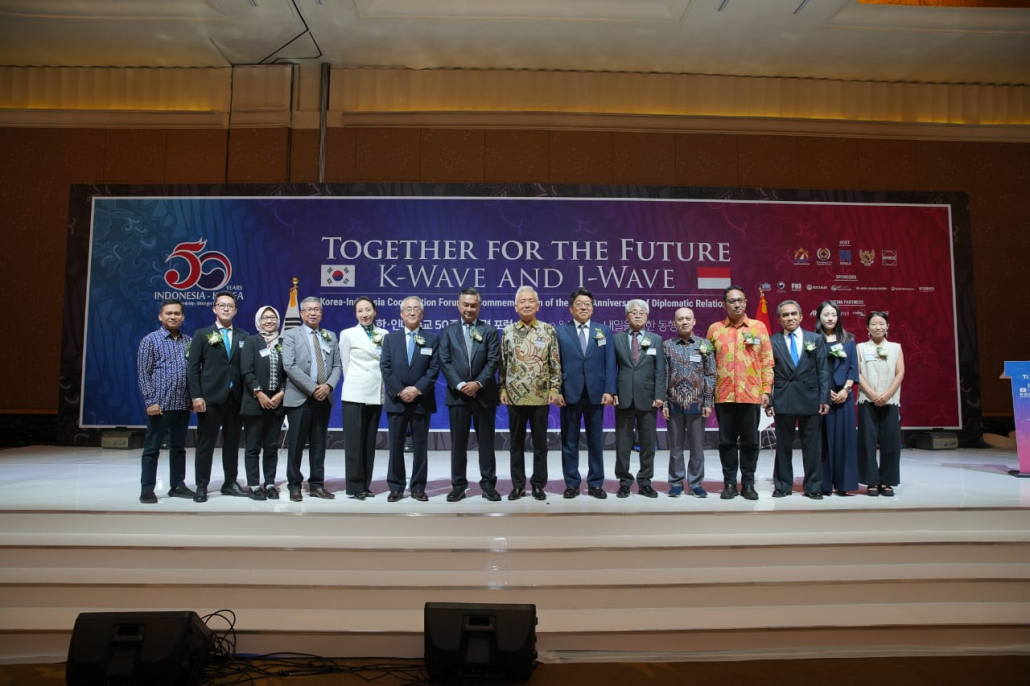
In order to celebrate 50 years of relations between South Korea and Indonesia. On November 30, 2023, the ASEAN Studies Center at Gadjah Mada University was invited to join the Korea-Indonesia Cooperation Forum in Commemoration of the 50th Anniversary of Diplomatic Relations at Hotel Mulia Senayan Jakarta, Grand Ballroom, Indonesia. In this meeting, was raising the theme “K-Wave & I-Wave, Together for the Future”
The Center was part of an academic seminar session commemorating 50 years of Korean-Indonesian diplomatic relations. The session began with remarks from Lee Sang-deok, Ambassador of the Republic of Korea to the Republic of Indonesia, then continued with Congratulations from Lee Kyung-soo, Former Deputy Minister of Foreign Affairs of the Republic of Korea, Vice President of the Korean Council on Foreign Relations (KCFR), and Dino Patti Djalal, Former Deputy Minister of Foreign Affairs of the Republic of Indonesia, Chairman & Founder of FPCI (Foreign Policy Community of Indonesia).
In this session, there were four representatives from the ASEAN Studies Center, namely Dr. Dafri Agussalim (Executive Director), Falikul Isbah (Adjunct Researcher), and Desintha Dwi (Fellow Researcher) as panelists, and Tunggul Wicaksono (Research Manager) as moderator.
In this session, representatives of the ASEAN Studies Center discussed “Steps to Expand Korea-Indonesia Cooperation in Order to Strengthen ASEAN Centrality” together with other panelists, namely GU Bo-kyeung, Research Professor at the Korea Institute for ASEAN Studies, Busan University of Foreign Studies (BUFS ), and KO Young-kyung, Research Professor at the ASEAN Center, Korea University.
The discussion session then ended with a summary of the morning session by KO Young-kyung and Tunggul Wicaksono, and then continued with lunch together.
NACT Country Coordinators Meeting and Annual Conference 2023

The Belt and Road Initiative (BRI) and the ASEAN Outlook on the Indo-Pacific (AOIP) are interconnected regions with significant potential for trade, infrastructure development, and economic growth. China introduced the BRI in 2013 to link Asia with Europe and Africa through infrastructure projects, trade routes, and cultural exchanges. Its implementation sparked discussion, prompting the need for a nuanced assessment of BRI’s impact on the global stage.
To generate a broader measure on this issue. On October 2023, 10-11, NACT China which is represented by the China Foreign Affairs University and NACT Indonesia which ASEAN Studies Center Universitas Gadjah Mada represents, held a Network of ASEAN-China Think Tanks (NACT) Country Coordinators Meeting and Annual Conference 2023 in Yogyakarta, Indonesia. This year’s NACT has the theme “High-Quality BRI Cooperation and the AOIP”.
On the first day, the meeting began with the NACT Country Coordinators Meeting, which was divided into two sessions. The first session was Retrospective Remarks on 2023, delivered by Prof. Yang Yue (NACT China) and Dr. Dafri Agussalim (NACT Indonesia). Meanwhile, the second session, namely Introductory Remarks on 2024, was delivered by Mrs. Vithaya Xayavong, NACT Laos (NACT Co-chair 2024), and also Prof. Yang Yue. The NACT Country Coordinators Meeting then continued with a discussion about the 2024 NACT Working Group meetings and the collaboration between Tracks I and II, which then ended with a group photo of the CCM.
The meeting then continued with the NACT Annual Conference, which was opened by Dr. Fina Itriyati, Vice Dean of Collaboration, Alumni, and Research Affairs, FISIPOL UGM. Then continued with opening remarks from Prof. Gao Fei, Vice President, China Foreign Affairs University, and continued with keynote speakers from H.E. Hou Yanqi, Ambassador of China to ASEAN; H.E. Derry Aman, Permanent Representative of Indonesia to ASEAN; and H.E. Ekkaphab Phanthavong (pre-recorded), Deputy Secretary-General of ASEAN for ASEAN Socio-Cultural Community for 2021-2024.
H.E. Hou Yanqi said that the ASEAN Indo-Pacific Outlook is an independent initiative of ASEAN, which includes important principles such as maintaining ASEAN’s central status, upholding openness and inclusiveness, and focusing on development and cooperation. Meanwhile, H.E. Derry Aman said that the ASEAN-China Joint Statement on Mutually Beneficial Cooperation on the AOIP, adopted during the 26th ASEAN-China Summit in Jakarta, signifies China’s support in ASEAN’s effort to mainstream and implement the AOIP.
Before the panel discussion session began, a group photo of the Annual Conference was also taken. NACT Annual Conference 2023 had three panel discussion sessions and raised the topic of “Promoting Mutually Beneficial Cooperation between the BRI and the AOIP”. The first session was moderated by Mr. Tunggul Wicaksono, Research Manager of the ASEAN Studies Center Universitas Gadjah Mada. The first-panel session started with a presentation from Ms. Ousa Cheng (NACT Cambodia), who delivered a presentation entitled “Driving Sustainability Together Exploring ASEAN-China Partnership in the Belt and Road Initiative and the ASEAN Outlook on the Indo-Pacific”. Continued by Prof. Han Zhaoying (NACT China) on “The Great Power Rivalry between the U.S. and China and its implications for Southeast Asia’s stability”, and Dr. Nur Rachmat Yuliantoro (NACT Indonesia) on “Converging the BRI and the AOIP: A View from Indonesia”.
The second session was moderated by Prof. Yang Yue from Dalian University of Technology (NACT China), with the first panelists namely Mr. Bounphieng Pheuaphetlangsy (NACT Lao PDR), Continued by Mr. Calvin Cheng (NACT Malaysia), who presented his thoughts on “Avenues for cooperation between the BRI and the AOIP”, and Dr. Khin Ma Ma Myo (NACT Myanmar) as the next panelist explained her research on Myanmar, “BRI Infrastructure Development in Myanmar: The Case of China-Myanmar Economic Corridor on Regional Connectivity”.
Last but not least, Ms. Yulida Nuraini Santoso, MSc., Managing Director of the ASEAN Studies Center Universitas Gadjah Mada, moderated the final panel discussion. The first panelist in this session, Mr. Jovito Jose P. Katigbak (NACT Philippines), presented his thoughts on “Harmonizing BRI and AIOP: A Philippine Perspective”. Continued by Dr. Kong Tuan Yuen (NACT Singapore) on “From RCEP to DEPA: Singapore Perspective on ASEAN-China Digital Cooperation“, Assoc. Prof. Dr. Dulyapak Preecharush (NACT Thailand) on “Thailand between the BRI and the AOIP: A Geopolitical Analysis & Solution”, and Mr. Tu Anh Tuan (NACT Vietnam) as the last panelist explained her research on “Promoting the Synergy of AOIP and BRI in a Changing World”.
The NACT Annual Conference discussion panel session was also attended by several lecturers, students, and representatives from the International Relations department and the ASEAN Studies Center in Yogyakarta. During the three discussion panels, the discussion sessions at the NACT Annual Conference were active, and many insights were gained in these sessions.
The first day of NACT 2023 then ended with a Welcoming Dinner and a performance from Unit Kesenian Jawa Gaya Surakarta (UKJGS). Meanwhile, on the second day of NACT 2023, the participants went on a day-long field trip in Yogyakarta. Starting with visiting the Yogyakarta Royal Palace, then continuing with lunch at Bale Raos. After that, do a Batik Workshop at Omah Budoyo, and then end with a Closing Dinner at Candhari Heaven Restaurant.
ASC UGM x Kemenko Polhukam Focus Group Discussion
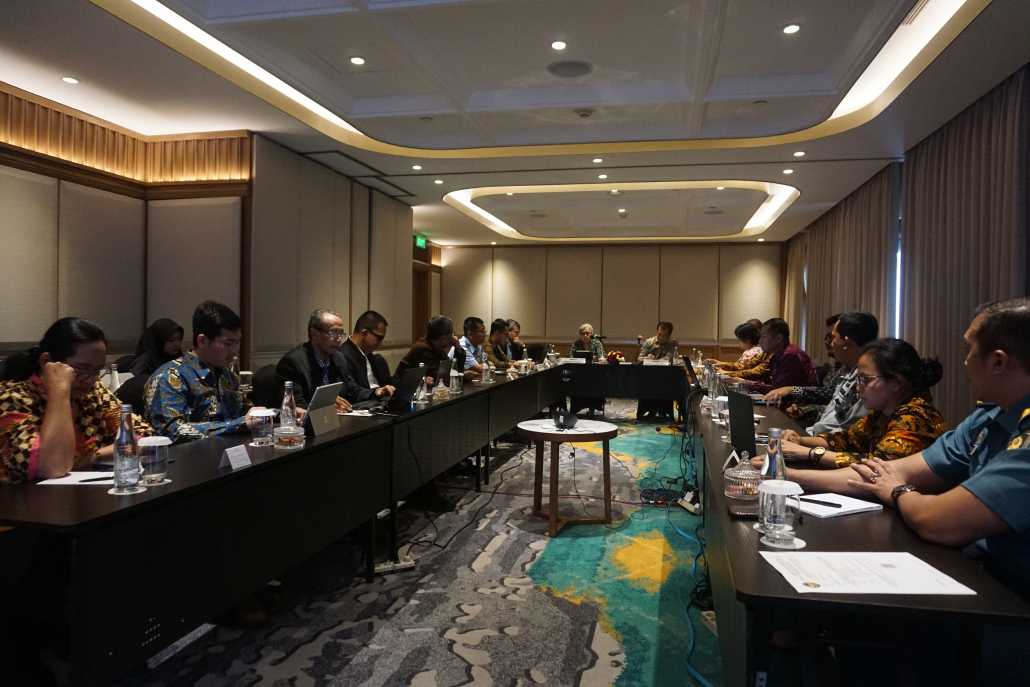
Yogyakarta, 27 September 2023 – ASEAN Studies Center Gadjah Mada University (ASC UGM) x Coordinating Ministry for Political, Legal, and Security Affairs (Kemenko Polhukam) held a Focus Group Discussion (FGD). This FGD raised the theme “Indonesian Maritime Diplomacy Strategy in Promoting South China Sea Solidarity” and was attended by the BRIN Research Center, ASEAN Studies Center at UNS, the Indonesian Maritime Security Agency, and the Human Rights and Maritime Law Coordinator, Directorate General of ASEAN Politics and Security.
Diplomatic Briefing and ASC Monograph 2023 Launch
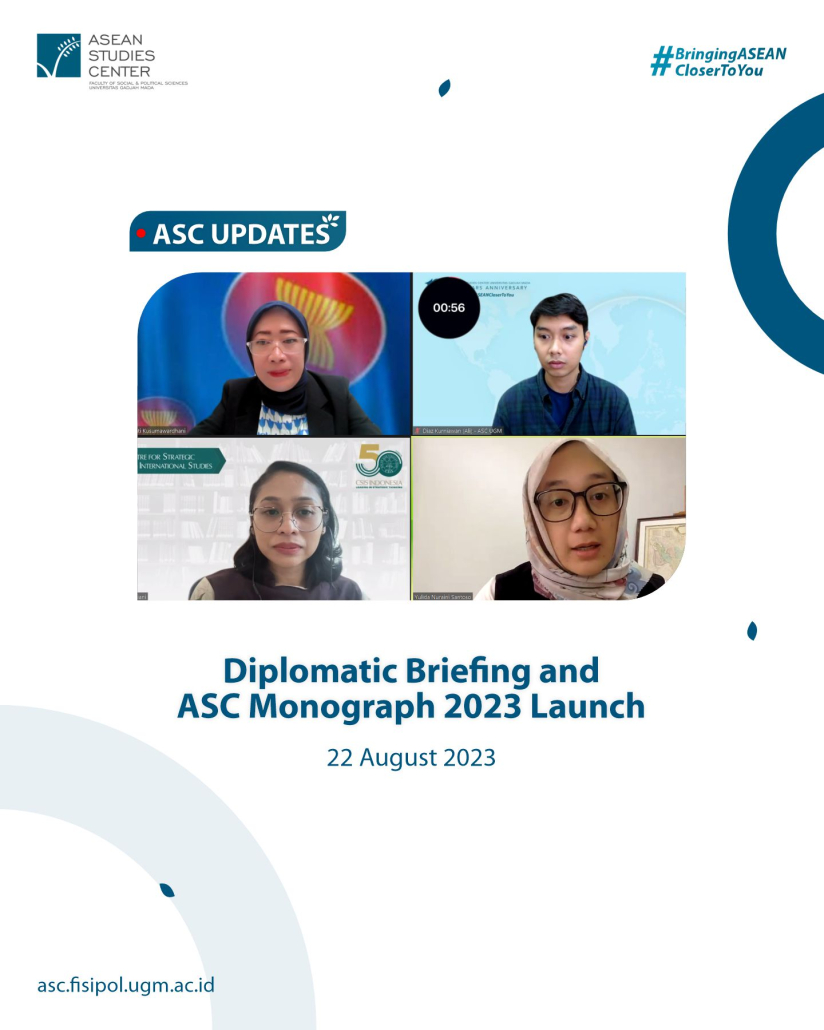
Yogyakarta, 22 August 2023 – ASEAN Studies Center Universitas Gadjah Mada (ASC UGM) held a Diplomatic Briefing event and the launch of the ASC Monograph 2023. The event had the theme Diplomatic Briefing on Strengthening Indonesia’s Leadership for the Promotion and Protection of Women and Children in ASEAN – ” Charting a Safer Future: Advancing the Rights and Well-Being of Women and Children in ASEAN” and took place online through the Zoom Meeting platform. It was attended by participants from diplomats, researchers, academics, and students.
The Diplomatic Briefing event took place at 13.00 (GMT +7) and was opened with opening remarks by H.E. Amb. Lambert G., Ambassador of the Netherlands, and Dr. Dafri Agussalim, Executive Director of ASC UGM. Meanwhile, the Diplomatic Briefing and ASC Monograph Launch event were moderated by Yulida Santoso, Managing Director of ASC UGM. This event allows presenters to share in-depth insights on women’s and children’s issues. Yanti Kusumawardhani, a representative from the ASEAN Commission on the Promotion and Protection of the Rights of Women and Children (ACWC), explained child issues. Meanwhile, Dr. Fitriani, Senior Researcher from the Center for Strategic and International Studies (CSIS), presented an in-depth review of women’s issues.
Meanwhile, the launch of the ASC Monograph 2023 was also one of the sessions that all participants had been waiting for. This monograph is a collaborative work between authors and an editor from ASC UGM. ASC Monograph 2023 raises the title “From Vulnerability to Resilience: Enhancing Women and Children’s Well-Being”. ASC Monograph 2023, this time with six chapters, was written by seven authors. Two of the seven authors include Tunggul Wicaksono (Chapter 1: Empowering Futures and Bridging the Gap in the Protection of Women and Children) and Dio Tobing (Chapter 5: Safeguarding Children’s Rights Online in ASEAN: A Shared Responsibility). At the launch event, Tunggul Wicaksono, Research Manager of ASC UGM, introduced the contents of the monograph with an emphasis on the main findings and their strategic implications. Dio Tobing, a representative from the World Benchmarking Alliance, was also present to discuss the relevance of the conclusions of the monograph to broader global developments.
This event also provided a space for participants to ask questions directly to the presenters and discuss various issues raised in the Diplomatic Briefing and the contents of the ASC Monograph 2023.
Open House ASC UGM: ASEAN Day!
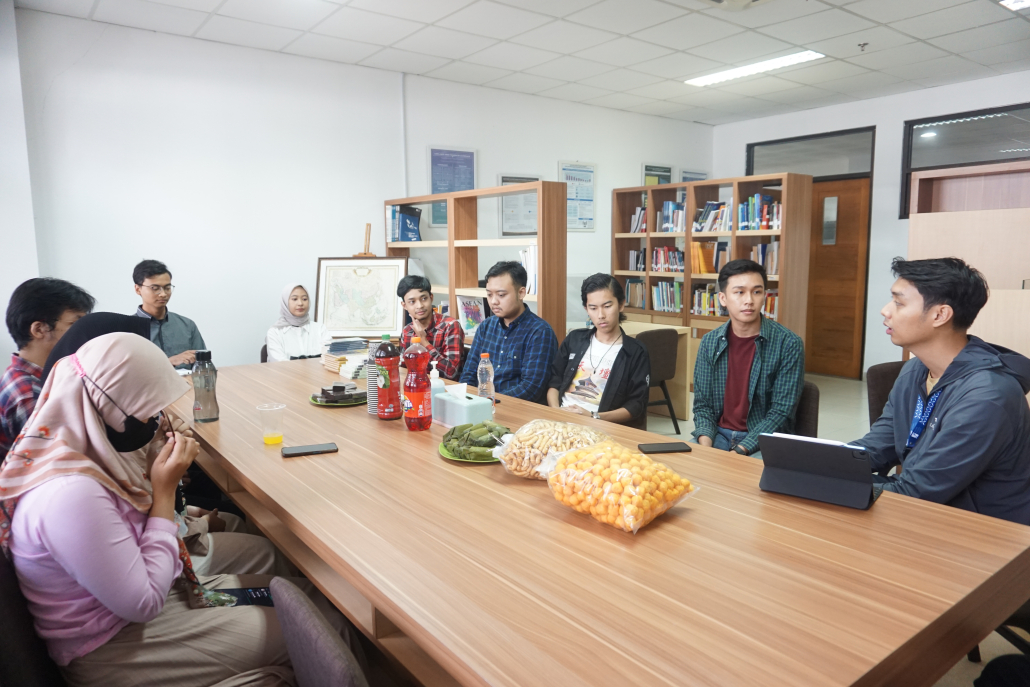
On August 8, 2023, the ASEAN Studies Center Universitas Gadjah Mada held an Open House in celebration of the 56th anniversary of ASEAN Day, in the BC building room no. 208–209, FISIPOL UGM. This activity opened at 13.00 WIB and was attended by students from various universities and different departments, such as UGM, UII, UMY, UPN, and UNY.
In the Open House activity, the session in room BC 208 was facilitated by Diaz Kurniawan, Program Manager of ASC UGM. In the session, Diaz Kurniawan explained the ASC UGM program division and the programs within it. One of the programs he presented was the ASEAN Youth Initiative Empowerment Program (AYIEP), which this year ASC UGM will again be holding a program for the fourth time with the theme “Human Rights in ASEAN”. Apart from explaining the AYIEP program, Diaz Kurniawan also explained the program that students always look forward to every year, namely the internship program.
Meanwhile, in room BC 209, there was a sharing session regarding research at ASC UGM, which was facilitated by Yulida Santoso, Managing Director of ASC UGM, and Tunggul Wicaksono, Research Manager of ASC UGM. In the sharing session, the students were quite active in asking questions, while one of the students wanted a 1-on-1 session. Therefore, Tunggul Wicaksono and the students shared ASC UGM research 1-on-1 in room BC 208. Meanwhile, Yulida Santoso continued the research-sharing session with students in room BC 209. The sharing session was then followed by a discussion on the South China Sea dispute, which has recently become a trending topic in the media.
The Open House activity then ended with a door prize draw. Where there were 8 students who were lucky to get flash disks, block notes, and mousepad prizes from ASC UGM. At this Open House, ASC UGM also distributed free books to the participants who attended.
The ASC UGM Open House activity in celebration of the 56th anniversary of ASEAN Day was a success. Therefore, it is hoped that this event will become an annual ASC UGM event in the future. Especially with this Open House event, ASC UGM can bring ASEAN closer to students. This is in line with the tagline owned by ASC UGM, namely “Bringing ASEAN Closer To You”.
ASEAN Chairmanship 2023: Indonesia’s Tendency to Solve the South China Sea Territorial Disputes

On 13 November 2022, the handover of ASEAN chairmanship from Cambodia to Indonesia was held at the ASEAN summit. Adopted the “ASEAN Matters: Epicentrum of Growth” theme, Indonesia is responsible for one year of ASEAN’s chairmanship. At the ASEAN summit, Joko Widodo, the President of Indonesia, said that ASEAN should be a peaceful and stable area and a presenter for global stability (Southgate, 2023). Some agendas should be a concern in Indonesia’s chairmanship. One of those is the issue that ASEAN has always faced: the South China Sea disputes. The conflicting claims of ASEAN’s countries’ sovereignty have worsened the relationship between China and ASEAN. So, how will Indonesia react while connecting the interest of Indonesia’s foreign policy?
Current Status of the Territorial Disputes in The South China Sea
The status of the South China Sea remains uncertain. The claim of ASEAN countries’ seas has been seen as an insult to countries’ sovereignty. Criticization until objection to the nine-dash line as a legal argument by China has been an agenda by ASEAN countries for years. Other countries, such as the United States, have stated their position to object to China’s claim by rejecting the claim of Vietnam, Indonesia, and Malaysia seas (U.S. Department of State, 2020). Other than that, the USA has expressed its concern about how unlawful the claims are and how China has violated international law (U.S. Department of State, 2020).
The tension between ASEAN and China has gradually increased due to this issue. China has increasingly put its efforts into reclaiming the land by expanding the size of the lands, military installations, and ports, especially in the Paracel and Spratly Islands (Center for Preventive Action, 2022). China also has militarized Woody Island with its jet, radar system, and cruise missiles (Center for Preventive Action, 2022). The Philippines, as one of the ASEAN members, has had a long-time dispute and negotiation with China. In reaction to China’s continued incursions into areas of Phillippine-claimed waters in the South China Sea, the Philippines has increased its military presence and gathered U.S. military assistance in the region (Gomez, 2023).
How about Indonesia’s response? The new demarcation exclusive economic zone (EEZ) between Indonesia and Vietnam will resolve the illegal, unreported, and unregulated (IUU) fishing (Strangio, 2022). This demarcation is also seen as an important step in settling maritime disputes in the South China Sea. In its ASEAN chairmanship 2023, Indonesia has also started a code of conduct (COC) for the South China Sea dispute (Reuters, 2023). This negotiation which has been ongoing for over 20 years, tried to be restarted by Indonesia. Even though the claim to proprietorship of territorial waters covers with Indonesian EEZ through the Natuna islands, Indonesia has frequently said that Indonesia is not a part of the South China Sea disputes (Pratama, 2023). Fact that China has sent a letter to stop Indonesia from drilling for oil and gas in Natuna and even sent Coast Guard to monitor it (Reuters, 2020), Indonesia reacted as if it is not an urgent thing. Indonesia responded and rejected the claim under the UNCLOS agreement saying that China’s claim had no legal basis (Reuters, 2020). While this scene happened in 2019, there are no further policies to China’s ego. This Indonesia’s silent treatment has indicated that Indonesia, with its interest in China’s policy, will not likely take serious steps to encounter China’s domination of the South China Sea.
Indonesia’s Current Foreign Policy: Tend to Align with China
A close relationship between China and Indonesia cannot be debated anymore. Under Joko Widodo’s chairmanship, a large investment cooperation called Belt and Road Initiative (BRI) has started. One of the most controversial projects, the Jakarta-Bandung high-speed railway, is under the BRI investment (Fitriani, 2022). Electric vehicles, a lithium battery factory in Morowali, Jatigede dam, and other developments are also under the BRI investment (Fitriani, 2022). Other than that, the mining and energy industries receive the majority of Chinese investment in Indonesia. Indonesia had the most coal-fired power stations developed overseas by Chinese companies as of 2021. Besides, Indonesia and China are also good partners for their food security. The decision of Indonesia to ratify the China Regional Comprehensive Economic Partnership (RCEP) shows satisfaction for China (Rahmat, 2022). The renewing agreement, Bilateral Economic and Trade Cooperation (BETC), that has been expired in April 2021, has also been an agenda of G20 between Indonesia and China (Rahmat, 2022). Based on these facts, it can be concluded that Indonesia’s interest has tended to favor China’s interest.
Even though its principle of foreign policy, “bebas aktif” (independent and active), it is understandable for Indonesia to align with the Asian superpower, China. It is logical and pragmatic because China offers more chances than other major powers and has become the main driver of global economic growth. Since the signing agreement of the Indonesia-China Strategic Partnership in 2005, China has become Indonesia’s largest trading partner. Moreover, China and Indonesia also have the highest import and export growth rates among ASEAN nations. According to the National Bureau of Statistics and China Customs, China and Indonesia’s combined import and export volume climbed from $66.234 billion in 2012 to
$124.57 billion in 2021, with a detail of USD 31.951 billion to USD 63.923 billion, Indonesia exported more goods to China. Other than that, through the China-ASEAN Free Trade Area, this bilateral trade has positively affected the expansion of some export commodities, such as palm oil and coal (Maria, 2022). The fact that both economies are complementary, with China having advantages in manufacturing and technology while Indonesia is rich in agricultural and raw materials, has been seen as a bilateral mutual relationship. In the future years, China’s investment in Indonesia will keep increasing as it becomes a more significant trading partner for Indonesia. Therefore, it makes more sense to accept China’s emergence and work together to counter the challenges it poses than condemning it or excluding it, which will only feed great power rivalries that could jeopardize Indonesian interests in the long run.
During Indonesia’s presidency, ASEAN’s economic recovery from the COVID-19 pandemic and promoting ASEAN’s economic growth will be the main agenda for the 2023 chairmanship (Southgate, 2023). These objectives can be seen in its eight flagship events, of which the Trade Ministry of Indonesia is responsible for four. These four flagship events, The ASEAN Online Sale Day, the ceremony of the RCEP, the launch of the new ASEAN tariff finder, and also the Digital Economy Framework Agreement (DEFA) agreement (ANTARA, 2023), have been seen as a focus on promoting ASEAN’s economic interest and strengthening the regional organization’s relevance in the global arena. These agendas align with Indonesia’s concern about its economic policy and also strengthen its relationship with China.
What is next?
Indonesia’s ignorance of the South China Sea dispute and Indonesia’s foreign policy tendency to China’s cooperation leads the writer to one conclusion: Indonesia will not likely finish the disputes between ASEAN members and China on the chairmanship of ASEAN. The dependency on China will guide Indonesia to enhance its foreign policy on the economy,
rather than solving the South China Sea issue. Despite numerous concerns about the stability of the area, Sulaiman (2019) argues that Indonesia is not developing a coalition to counter China’s expanding dominance in the South China Sea or improving its ability to project power. Indonesia’s interest has fallen into China’s hands. The strategic culture that affects Indonesia’s military and foreign policy thinking on threat perceptions and economic considerations results in under-balancing conduct, which restricts Indonesia’s alternatives in relation to China. China as a state is therefore not regarded as posing a significant, direct, or immediate threat that would require a prompt response and could damage Indonesia’s more significant interests. Moreover, the writer believes that Indonesia maintains its stance in position: Indonesia does not think that the issue is urgent to solve. Indonesia’s government is ignorant enough about the issue and currently does not have any intention to make policies to counter the unilateral recognition. Indonesia also has not been damaged enough to shift its foreign policy for the security of sovereignty. Therefore, Indonesia’s interest in the mutual economic relationship with China has made stagnancy on the issue, even in Indonesia’s year of ASEAN chairmanship.
Through the article, the writer believes that the settlement of South China Sea disputes will remain stagnated, not much different from the chairmanship of Cambodia. The interest between Indonesia and China has gradually strengthened and will obstruct the settlement of the issue, including foreign policy tendencies and economic reasons. Thus, Indonesia should not get swayed by the mutual relationship but view the issue with an objective perspective. The ASEAN region has got threatened enough to create a project power to encounter China’s power. Therefore, Indonesia needs to balance the security danger that China poses in the South China Sea by taking necessary steps, especially in its ASEAN chairmanship in 2023.
About Writer
Jefferson Davids Soasa is an undergraduate in the department of International Relations at Universitas Gadjah Mada.
Bibliography
ANTARA. (2023). Trade Ministry prepares 4 flagship events for ASEAN Chairmanship 2023. Antara News. https://en.antaranews.com/news/270234/trade-ministry-prepares-4-flagship-events-for-asean-chairmanship-2023
Center for Preventive Action. (2022). Territorial Disputes in the South China Sea. Global Conflict Tracker; Global Conflict Tracker. https://www.cfr.org/global-conflict-tracker/conflict/territorial-disputes-south-china-sea
Gomez, J. (2023). Philippines confronts Chinese diplomats over sea disputes. AP NEWS. https://apnews.com/article/china-philippines-south-china-sea-disputes-70ea7983dbf67 b1f9ae5264c6ce9271a
Maria, C. (2022). The Impact of Trade Agreement and War on Specific Indonesia-China Bilateral Trade. Journal of Research on Business and Tourism.
Pratama, A. (2023). Indonesia’s Ambiguity in the South China Sea is Hampering its Interest. Modern Diplomacy. https://moderndiplomacy.eu/2023/01/13/indonesias-ambiguity-in-the-south-china-sea- is-hampering-its-interest/
Rahmat, M. Z. (2022). China-Indonesia Relations in 2022: A Year in Review. Stratsea. https://stratsea.com/china-indonesia-relations-in-2022-year-in-review/
Reuters. (2020). Indonesia rejects China’s claims over South China Sea. Reuters. https://www.reuters.com/article/us-indonesia-china-southchinasea/indonesia-rejects-c hinas-claims-over-south-china-sea-idUSKBN1Z01RE
Reuters. (2023). ASEAN chair Indonesia to intensify talks on code for South China Sea. Reuters. https://www.reuters.com/world/asia-pacific/asean-chair-indonesia-intensify-talks-code-south-china-sea-2023-02-04/
Southgate, L. (2023). Indonesia’s ASEAN Chairmanship: Promoting ASEAN Relevance in 2023? Thediplomat.com. https://thediplomat.com/2023/01/indonesias-asean-chairmanship-promoting-asean-relevance-in-2023/
Sulaiman, Y. (2019), What Threat? Leadership, Strategic Culture, and Indonesian Foreign Policy in the South China Sea. Asian Politics & Policy, 11: 606-622. https://doi.org/10.1111/aspp.12496
Strangio, S. (2022). After 12 Years, Indonesia and Vietnam Agree on EEZ Boundaries. Thediplomat.com. https://thediplomat.com/2022/12/after-12-years-indonesia-and-vietnam-agree-on-eez- boundaries/
U.S. Department of State. (2020). U.S. Position on Maritime Claims in the South China Sea. United States Department of State. https://2017-2021.state.gov/u-s-position-on-maritime-claims-in-the-south-china-sea/in dex.html
Williams, R. D. (2020). What did the U.S. accomplish with its South China Sea legal statement? Brookings. https://www.brookings.edu/blog/order-from-chaos/2020/07/22/what-did-the-us-accom plish-with-its-south-china-sea-legal-statement/

